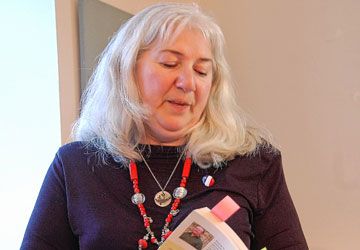|
This breath-taking drone video was taken during fly-overs at Cape Saint Mary's and Mavillette Beach. Enjoy! Link to: Flying over Cape Saint Mary's and Mavillette, NS - Mavic Mini by OMV - Aerial Videography - Mavic Mini @omv-aerialvideography-mavi6189. https://www.youtube.com/watch?v=gyOWb71y2pw&t=9s
Jourdan Thibodeaux has profound words: "Oh tu vis ta culture Ou tu tues ta culture Il n'y a pas de milieu." ("You live your culture or you kill your culture... there is no in between." ) Let his message sink in while you listen to his music. Link to: La Prière, Official video for “La Prière” by Jourdan Thibodeaux et Les Rôdailleurs directed by Jourdan Thibodeaux and Drake LeBlanc, Télé-Louisiane April 17, 2023. https://youtu.be/-3AQ5BYrXXE
A short drone film of Wedgeport, Nova Scotia, a lobster fishing community, surveys its most beautiful views and landmarks.
Link to: https://www.youtube.com/watch?v=j9AROXUlQ9U&t=17s News and Reflections: "A French surname may not mean an Acadian pedigree" -- April 12, 20234/12/2023
Link to: Punch, T. (2023, April / May). "A French surname may not mean an Acadian pedigree: Generalizing is a human tendency, but it’s a poor habit to get into. It may stem from mental laziness, or simply from our need to arrange information in ways we can readily grasp. The trouble is that, sometimes, we get things wrong." Saltscapes. https://www.saltscapes.com/roots-folks/1447-not-all-acadians.html
“It was said that the Mallets descended from 'savages' and my father said that his grandmother carried the pen. All these stories aroused my curiosity,” says historian Lisette Mallet, invited by the Toronto Historical Society to her monthly talk at the Alliance française. Click here to read the rest of Lisette's story: https://l-express.ca/des-metis-acadiens-a-toronto/ Link to: l'express.ca. (2016, 26 avril). "Des Métis acadiens à Toronto." l'express.ca. https://l-express.ca/des-metis-acadiens-a-toronto/ Note: To translate the article from original French into English, use your Chrome browser to view this post and then click the translate button when prompted.
|
Archives
June 2025
Category
All
|





 RSS Feed
RSS Feed


